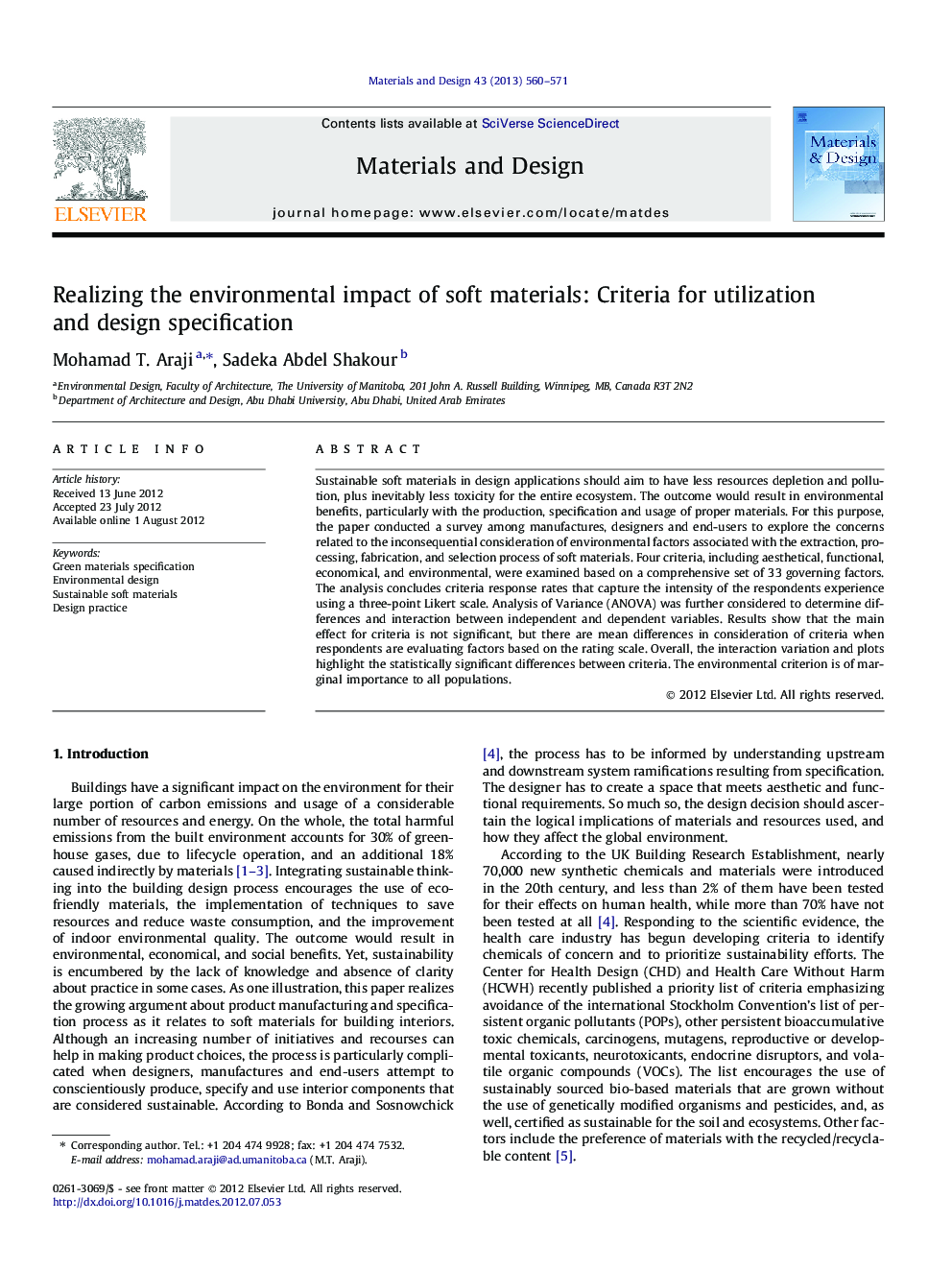| Article ID | Journal | Published Year | Pages | File Type |
|---|---|---|---|---|
| 830444 | Materials & Design (1980-2015) | 2013 | 12 Pages |
Sustainable soft materials in design applications should aim to have less resources depletion and pollution, plus inevitably less toxicity for the entire ecosystem. The outcome would result in environmental benefits, particularly with the production, specification and usage of proper materials. For this purpose, the paper conducted a survey among manufactures, designers and end-users to explore the concerns related to the inconsequential consideration of environmental factors associated with the extraction, processing, fabrication, and selection process of soft materials. Four criteria, including aesthetical, functional, economical, and environmental, were examined based on a comprehensive set of 33 governing factors. The analysis concludes criteria response rates that capture the intensity of the respondents experience using a three-point Likert scale. Analysis of Variance (ANOVA) was further considered to determine differences and interaction between independent and dependent variables. Results show that the main effect for criteria is not significant, but there are mean differences in consideration of criteria when respondents are evaluating factors based on the rating scale. Overall, the interaction variation and plots highlight the statistically significant differences between criteria. The environmental criterion is of marginal importance to all populations.
► Introduce literature on extraction, processing & specification of soft materials. ► Examine soft materials’ esthetic, functional, economical & environmental criteria. ► Conduct a survey involving manufactures, designers & end-users of soft materials. ► Generate response rates, boxplots & ANOVA to study data interaction & variation. ► Conclude samples’ marginal consideration of environmental factors in soft materials.
